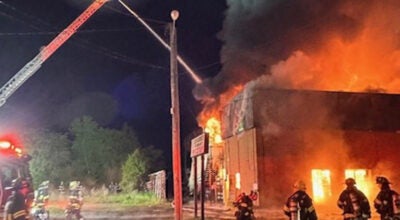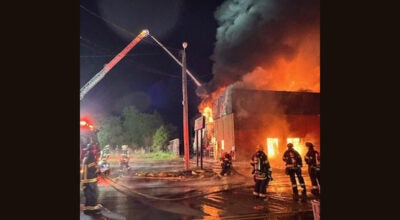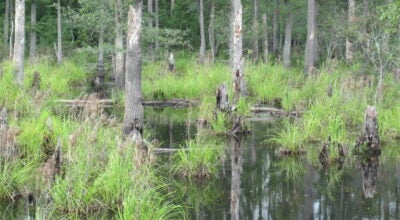Investments in offshore wind, port ‘are really going to be helpful,’ legislators say following aerial tour of region’s infrastructure
Published 6:26 pm Tuesday, February 22, 2022
|
Getting your Trinity Audio player ready...
|
U.S. Sen. Tim Kaine and U.S. Rep. Elaine Luria took an aerial tour via Coast Guard helicopter Monday of Port of Virginia infrastructure and the wind turbine project off the Virginia Beach coast with an eye toward how those and other infrastructure projects in the region could benefit from legislation passed earlier this year.
The bipartisan Infrastructure Investment and Jobs Act, they said, will support these projects and others in the region, including the Hampton Roads Bridge-Tunnel expansion. Besides flying over the port and the HRBT, they also flew over the construction taking place at the Chesapeake Bay Bridge-Tunnel, Craney Island and the Coast Guard station.
In addition to the $69.3 million in federal money for the Norfolk Harbor widening and deepening project, the two Virginia Democrats sent a letter last week to President Joe Biden calling for another $76.9 million in federal money for the project.
In December, Kaine and Sen. Mark Warner announced that the Virginia Port Authority would receive $20 million in federal funding from the Department of Transportation to allow for improvements to Portsmouth Marine Terminal for it to serve as a staging area to support wind turbine manufacturing for the offshore wind project, and for other such projects along the East Coast. The 180 wind turbines will be located 27 to 42 miles off the Virginia Beach coast.
In October, Siemens Gamesa announced that it would develop more than 80 acres of the 287-acre terminal to manufacture the blades to go on the turbines. Dominion Energy is leasing 72 acres at the terminal for 10 years to stage and pre-assemble the foundations and turbines.
Danish offshore wind developer Ørsted will lease 1.7 acres at the terminal for offshore wind equipment and staging materials through at least 2026, per an agreement with the state in 2020. It has options to expand to an additional 40 acres.
Officials have said there would be about 1,100 direct and indirect jobs across Hampton Roads and nearly $210 million in economic activity by late 2026, when the turbines are expected to go online.
“We had a chance to fly out and see the offshore wind turbines,” Luria said, “and to see that from the air and understand the scope of this project once it’s going to be developed is such an exciting opportunity for Hampton Roads.”
Luria said they also got a good overview of the impact of these projects on the Coast Guard, as it has more than 2,000 personnel stationed in Hampton Roads, with its Portsmouth station now the biggest on the East Coast. They flew with Coast Guard Rear Admiral and Fifth District commander Laura Dickey.
Kaine noted the large scope of Coast Guard responsibility along with bridge permitting and managing traffic in and out of the Port of Virginia, as well as the role it is playing in the permitting process for Dominion Energy’s offshore wind farm.
“They have a real hand in the design of these offshore wind farms because they have to do search and rescue,” Kaine said. “So do you build the turbines point-seven miles apart, you build them one mile apart? They have to figure all that out. That was interesting to see the breadth of the work that they have to do.”
The dredging project, when complete, will provide the Port of Virginia with the deepest shipping lanes among East Coast ports at 55 feet and cost about $350 million.
Kaine said he wanted to have the aerial tour with Luria due to the impact of the infrastructure bill on Hampton Roads, and with her representing a large part of the region in the Second District, though redistricting has changed what areas she will represent should she be reelected. The new maps add parts of Suffolk, Isle of Wight County and Chesapeake, and subtract parts of James City County, York County, Williamsburg, Norfolk and Hampton.
“It’s going to have such an impact on Virginia, and maybe nowhere in Virginia more than right here,” Kaine said. “When you see the bridge construction going on the two bridges, when you think about $17 billion in the infrastructure bill for port operations around the United States, and then another $9 billion for the (Army Corps of Engineers) for dredging and all the other priorities that the Corps has, the prospects for just dramatic investments here in Hampton Roads that will be good for the economy, it will be good for quality of life, it will be good for resilience and sea-level rise, that will be good for military operations, that will be good for a new industry in offshore wind. These investments are really going to be helpful.”






